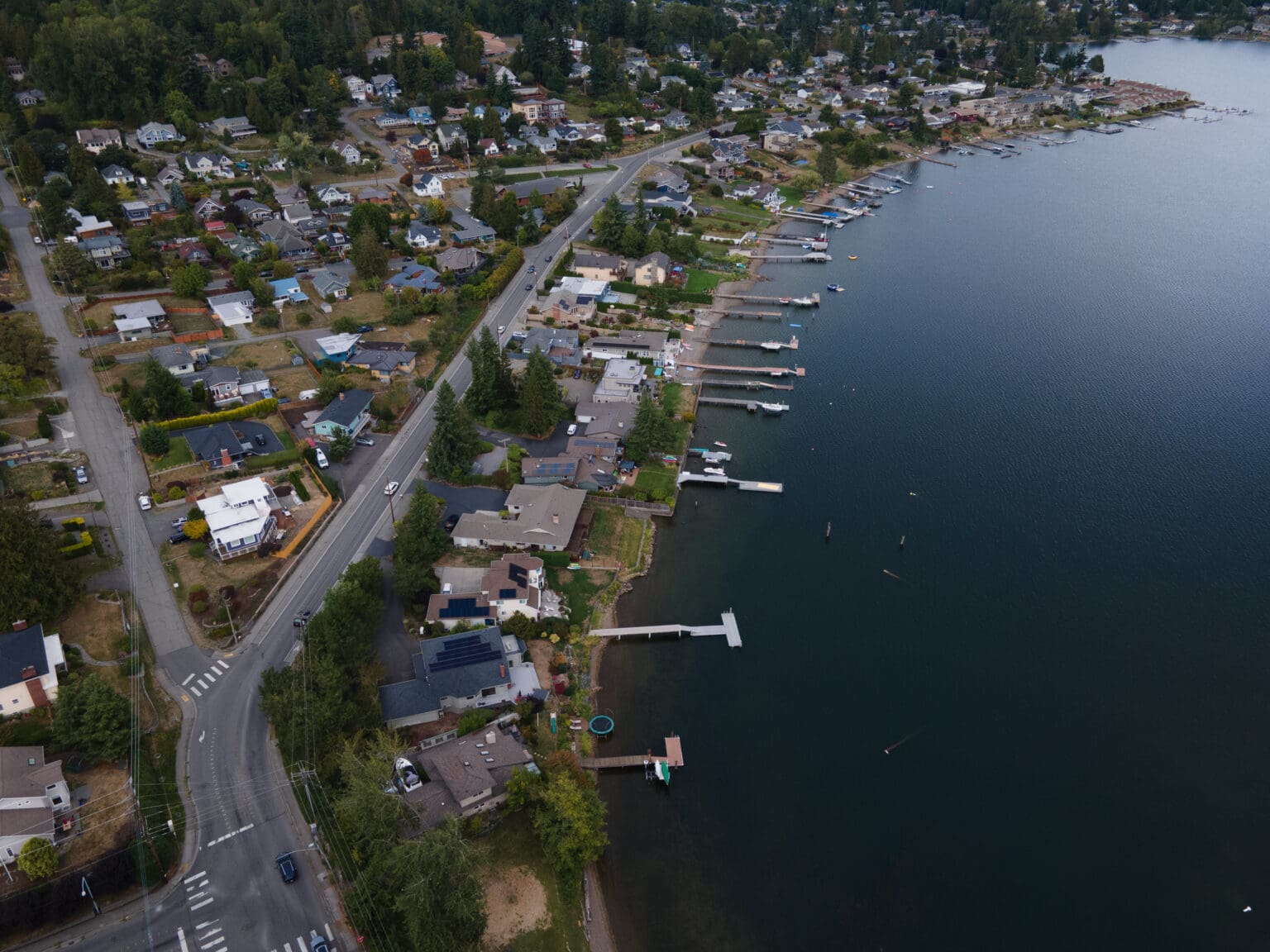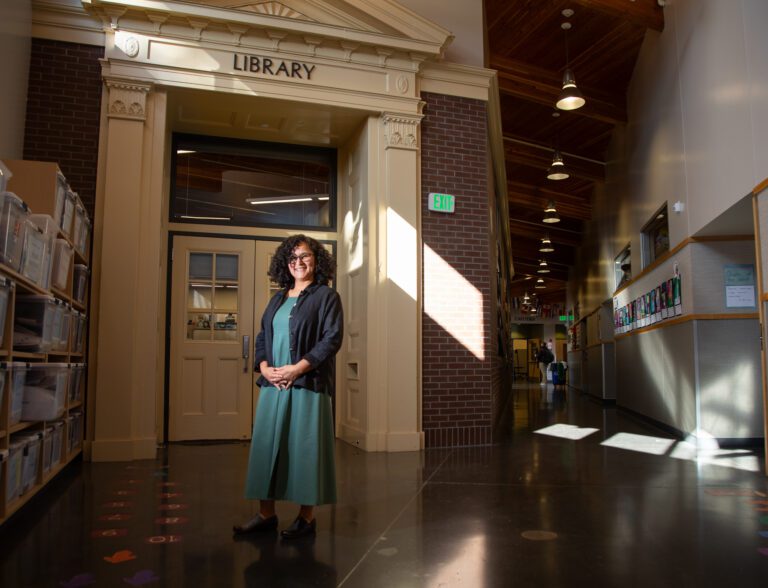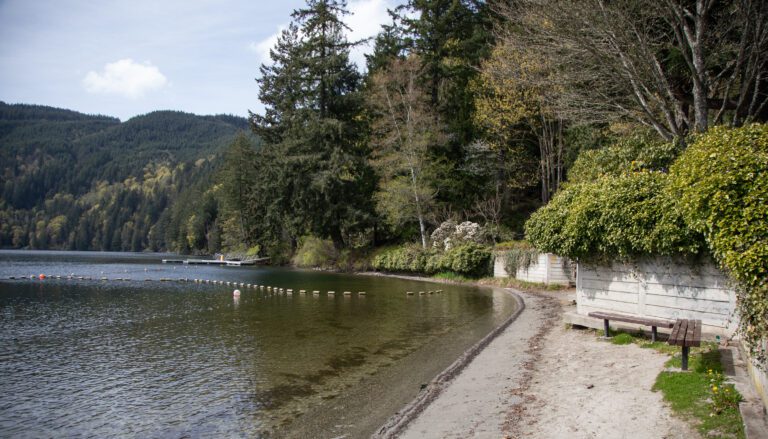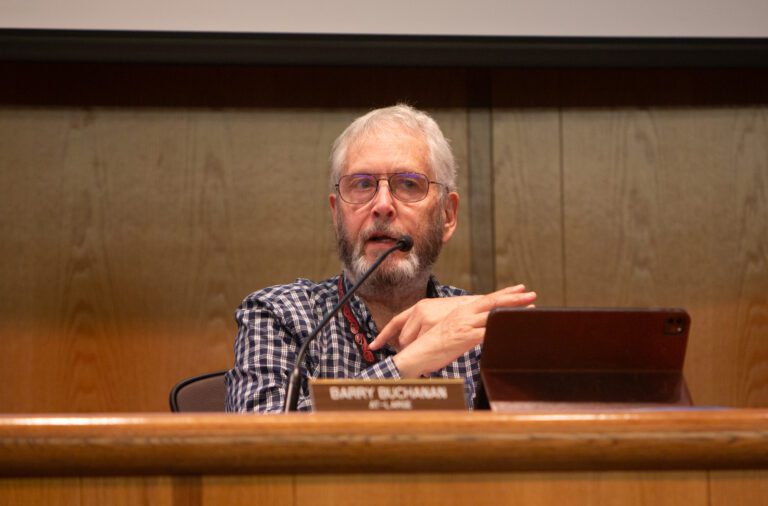Decades of construction and factory operations along waterfront property have left Whatcom County with a 250-billion-gallon-sized problem in Lake Whatcom, the source of drinking water for more than 100,000 residents.
Protecting the resource — and preventing future, expensive water treatment projects — has been a priority for city and county leaders for decades as high levels of phosphorus and bacteria impact water quality.
Community members, too, identified protection of the reservoir as a top priority in the Cascadia Daily News Citizens Agenda process, and asked what significant actions candidates might take if elected.
Proposals from candidates running for county council, as well as those running for Bellingham mayor and county executive, call for increased efforts in land acquisition around the lake, and encouraging neighboring landowners to participate in a homeowner incentive program to help remove possible sources of contamination.
Similar efforts have already been in the works for decades, and data shows the water quality has improved marginally since the Environmental Protection Agency declared it an “impaired body” of water in 1998.
But the process, officials and experts agree, is slow and requires patience to see positive results; quick solutions are not feasible.
Land acquisition
Land acquisition has been a central tactic in the fight to clean up Lake Whatcom because it removes acreage from potential development and could reduce the amount of phosphorus flowing into the lake from homeowners’ lawns.
The Lake Whatcom Land Acquisition and Preservation Program was launched in 2001, adding a $5 surcharge to water bills. That money went toward property acquisition, and in 2012, a Bellingham City Council ordinance proposed by now-mayor Seth Fleetwood — up for reelection this year — upped that surcharge to $12.
“That allowed us to continue buying,” Fleetwood told CDN’s editorial board during a scheduled interview in September. “When I wrote that, I made it broad. … It was acquisition, but it was also creating a funding source for stormwater retrofits.”
Fleetwood acknowledged the lake’s recovery through property acquisition is slow, but said it’s vital to long-term recovery.
“If we could return the entire watershed to a state of pristine wilderness overnight, the experts report that we could continue to see downward trends for some period,” he said in March this year. “It will take some time to see the improvement.”
Speeding up the acquisition program could help, he said, but right now the program remains open to “voluntary sellers.”
His opponent in the mayoral race, nonprofit leader Kim Lund, said she is committed to the county partnership to help manage the lake. Land acquisition is vital because “development is outpacing preservation,” she added.
Water quality
Whatcom County Executive Satpal Sidhu, running for reelection this year, said the property acquisition program is just one solution for improving water quality in the watershed. He pointed to existing strict construction guidelines and laws about fertilizers and other materials that could leach into the lake, and said those protections will only boost water quality over the coming decades.
County Executive candidate Dan Purdy said the county needs to focus on in-water solutions, too.
Underwater pollution, he said, includes “legacy sediment” that needs to be cleaned up through chemical treatments.
“Legacy sediments are built up over time, and it’s basically an accumulation of all of our sins from the past, including the coal operation that we had,” Purdy said during an interview with CDN’s editorial board in September.
His plan, he said, is to advocate for underwater chemical treatments or a mechanical apparatus to remove phosphorus in legacy sediments, in addition to homeowner mitigation incentives and land acquisition.
Additional solutions
Whatcom County Council at-large candidate Jon Scanlon pointed to increased forest canopy and reduced timber harvest in the watershed to support habitat restoration, as well as housing density in “urban growth areas” — land where future development is expected — outside the watershed to decrease pressure to build near the lake.
More than that, though, he said he plans to support the creation of a new Lake Whatcom advisory group at the county level.
“I think it makes sense to have a place where experts and citizens can advise the county on what it ought to be doing around the lake,” said Scanlon, a current board member of local environmental nonprofit RE Sources. “We don’t have that right now.”
Management of the lake currently falls to a joint committee composed of the Bellingham City Council, Whatcom County Council and the Lake Whatcom Water and Sewer District Board of Commissioners. The group meets each year at the “State of the Lake” presentation, where they discuss phosphorus levels and how they impact water quality.
His opponent in the county council race, Hannah Ordos, said the joint committee has been key to improving water quality in the lake. Between the joint management committee, about 10,000 acres in the watershed have been removed from development, Sidhu said.
“I wouldn’t want to recreate the wheel on something that’s already out there and potentially working,” Ordos told CDN’s editorial board during a scheduled interview in September. “I think that making sure that we’re testing [water quality] appropriately, making sure that we’re listening to the experts on the things that need to be done.”
Ordos, a customer support manager for a nutritional supplement company, said she needs to spend more time understanding the issues with the lake before committing to long-term solutions for Lake Whatcom, but said she plans to listen to experts and emphasize the existing tools that work, if elected.
During the 2023 State of the Lake, researchers from Western Washington University said data from monthly sampling at four sites — which monitors algae, dissolved oxygen and phosphorus levels — showed minimal improvements in nutrient levels.
Large construction and development projects in the watershed have been a major source of that phosphorus, according to the state Department of Ecology. It’s also a popular site for recreation and concerns remain about high levels of fecal coliform bacteria.
“It’s not a fast process to turn off the taps of phosphorus,” Angela Strecker, the director of Western’s Institute for Watershed Studies, said during the State of the Lake meeting. “It took a long time to get to this point, and it’ll take us a long time to get out of it.”
Getting out of it, though, is crucial as more residents move to the area and rely on the lake for drinking water.
The lake’s health is key to avoiding what nearly everyone agrees would be the worst outcome: the need for very expensive expanded treatment of lake water.




